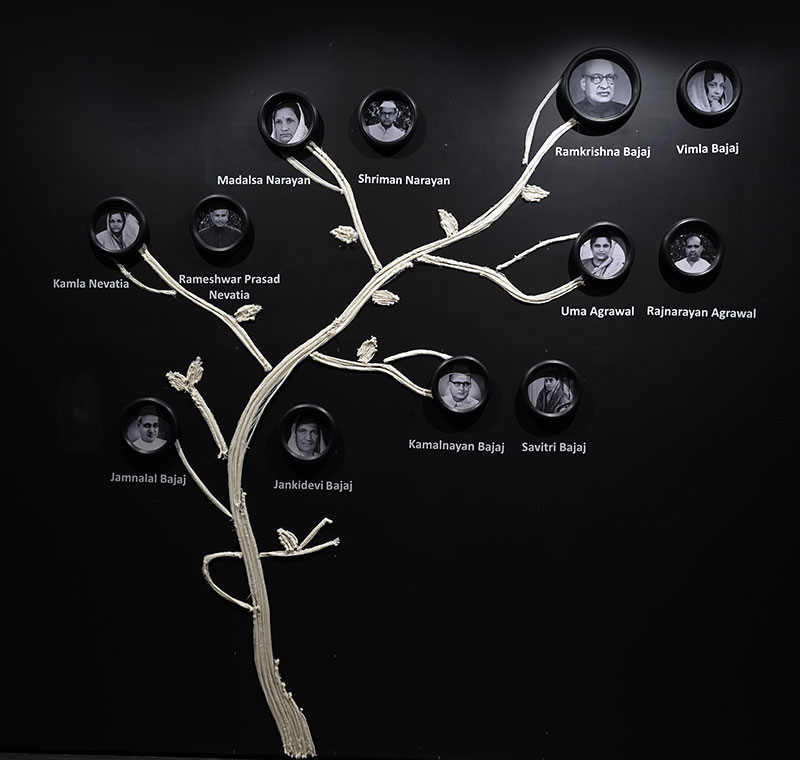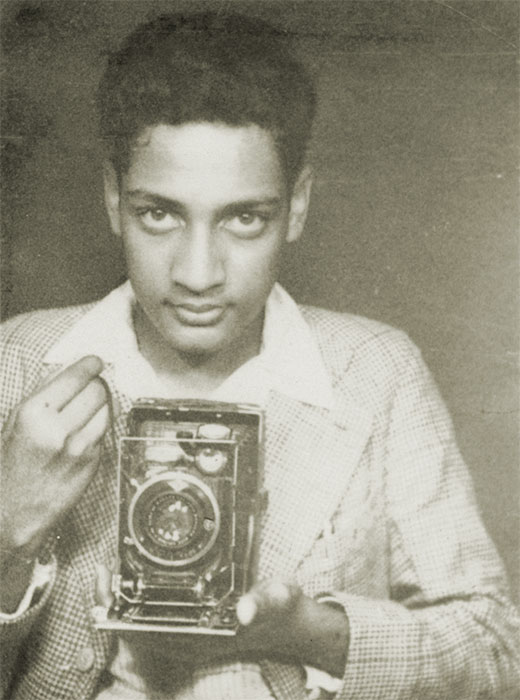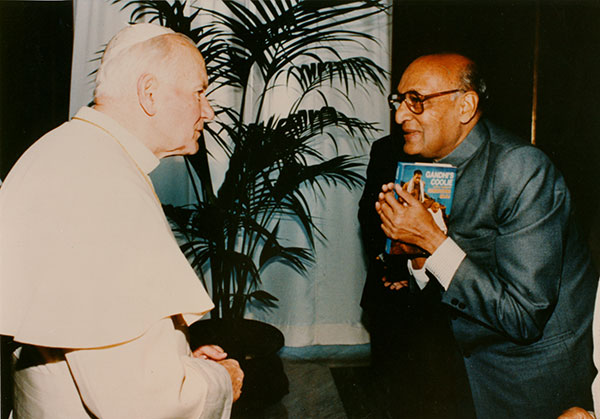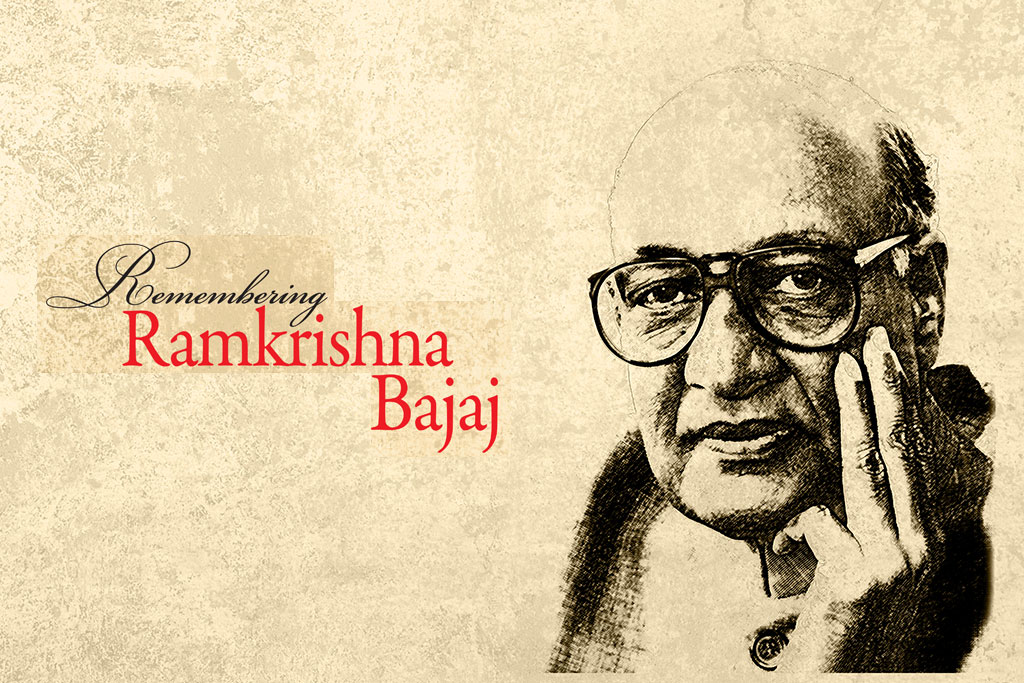'A Century of Vision and Legacy', a retrospective exhibition held in Mumbai, honours visionary Ramkrishna Bajaj on his birth centenary.
Bajaj Heritage, the Archive of the Bajaj family, presents an exhibition ‘A Century of Vision and Legacy’ to celebrate the birth centenary of Ramkrishna Bajaj, the head of Bajaj Group of Industries— a humanitarian first, industrialist later. The exhibition narrates the remarkable story of a businessman, perhaps the only one in his generation, who grew up in the Gandhian values of ‘Simple Living, High Thinking’ to eventually leading one of the most successful business houses in independent India.
The Bajaj legacy
The youngest child of Jamnalal and Jankidevi Bajaj, Ramkrishna was born on 22 September 1923 in Wardha, where he studied at the Navabharat Vidyalaya. The seeds of patriotism and virtuousness were sown early on in his life. He left his studies to participate in the freedom struggle. Under the tutelage of social reformers Mahatma Gandhi and Vinoba Bhave, he gained practical, hands-on knowledge of the world. His adolescent experiences were enriched with his involvement with Satyagraha, the khadi movement and his engagement with constructive work.

Ramkrishna Bajaj was 17 when he got special permission from Gandhiji to participate in the individual Satyagraha in 1941. He intermittently spent three years in jail (1942-1945) for participating in the Quit India Movement. These guided his actions, thus leaving behind a unique legacy in ethical business practices, social welfare, and promotion of Gandhian values.
Bajaj was at the forefront of societal change. He increased the reach of education as the Chairman of the Shiksha Mandal in Wardha, which runs colleges and a polytechnic. He facilitated the propagation of the Gita’s message, especially among schoolchildren, as the Chairman of Gita Pratishthan. He steered significant charitable activities as the Chairman of Jamnalal Bajaj Seva Trust and Founder of the Jamnalal Bajaj Foundation.
In 1952, Bajaj joined his family business as a director, and served Bajaj Electricals till his death in 1994. He is survived by his wife and three sons.

His life and philosophy
The exhibition commemorating 100 years of Ramkrishna Bajaj—an Indian businessman and freedom fighter—is a tribute to the extraordinary man and the enduring legacy he bestowed on us, and continues to inspire and shape our nation. The impact of his life’s work still resonates with us profoundly. The exhibition is a step into the world of a man whose life work exemplified integrity, compassion and a commitment for the greater good. It interprets archival material in modern ways, and weaves together static documents, photographs and objects to bring to the fore the story of the freedom struggle and the post-colonial state through the perspective of Ramkrishna Bajaj’s life and philosophy.
With extensive use of dynamic multimedia technology, the exhibition presents an immersive experience that takes the viewer on a journey across defining periods in Indian history, narrated through the life of Ramkrishna Bajaj.
The highlights of the exhibition include unseen candid photographs of Indian National Congress leaders inbetween meetings clicked by a young Ramkrishna himself, dramatic recreations of certain episodes from his life including his devout Gandhian politics, his participation in Satyagrahas, his arrest by the colonial state, as well as his engagement in hand-spinning cloth, including a khadi sari.
The exhibition presents a letter written by Bajaj from the post-independence period, urging the Prime Minister Indira Gandhi to control black money, and his views on the Babri Masjid demolition which promoted peace amidst strife. Another letter to late industrialist JRD Tata sheds light on consumer protection. A striking feature of the exhibition is the uniquely crafted audio pieces that elevate the showcase, including preserved sitar recordings that were performed by Ramkrishna’s wife Vimla Bajaj.

An inspiring individual
As an overview, the exhibition showcases the story of India demonstrated through the life of an inspiring individual. It takes every visitor on a journey of new learnings and thoughtprovoking ideologies while simultaneously tracing the aspirations of a country from Swaraj to liberalisation.
The exhibition is curated by art historian Dr Arshiya Lokhandwala and her team of four multimedia artists, Payal Arya, Aditi Kulkarni, Anokhi Shah and Sultana Zana, aided of course, by the Bajaj Archives team, Sanghamitra Chatterjee, Sneha Rego and Avantika Prabhakar.

Recent Posts
Discover Your Perfect Honeymoon in the Maldives
For Indian couples embarking on their journey of togetherness, the Maldives has long held an almost mythical allure - a tapestry of turquoise
Jewels Fit For Generations : The Nemichand Bamalwa Story
Since 1987, Nemichand Bamalwa Jewellers has been more than just a name; it is a legacy of trust, craftsmanship, and innovation.
Welcome to "What's Your Plan?"
This vibrant social hub by DJRS Hospitality blends chic vibes with gourmet bites,
Rajasthan’s Crafty Fashion Takeover
Rajasthan, India’s desert jewel, is a repository of exquisite and time-honoured crafts.
‘Mercii’ Beaucoup, Mumbai!
Stepping into Mercii at 81 Crest, Khar, feels like entering a world where gratitude is plated with every exquisite bite.
Game. Set. Watch: Omega Celebrates Smriti Mehra
Luxury Watch Boutique Time Avenue, Mumbai, in collaboration with Omega, hosted a special event to honour none other than Smriti “Simi” Mehra,
Sand, Sea & Sky - High Thrills
Whether you’re soaking in serene natural beauty or diving into extravagant fun, the UAE offers the perfect setting for an unforgettable family getaway.
Dr. Anuja Luniya Shows You How to Stress Less, Live More
Meet Dr. Anuja Luniya, physiotherapist by degree, stress strategist by passion, and your go-to guru for turning everyday chaos into calm.
Breitling's 140th-Anniversary Vintage Watch Exhibition: An Unmissable Showcase
The Breitling Heritage Exhibition, a remarkable showcase of the brand’s most iconic timepieces from its 140-year history, has been on an extensive global tour with 55 stops across four continents.
Dawn to Dusk with Sidhart Pansari: Steering Primarc's Legacy into the Future
We follow the dynamic director of the fastascendant Primarc Group
4 Perfect Getaway Resorts Near Mumbai
For those looking to break away from the urban bustle, India's hidden nature
48 Hours In Canberra
Canberra is a vibrant city with a rich culture, awe-inspiring natural landscapes, adventure-filed activities, and hospitable locals.
Understated Power
In the charming town of Shillong, Meghalaya, golf is more than just a game—it's a family affair for Gaurav and Lakshya Bajaj.
Understated Power
The Lexus LX500d is a rare sight on the roads, and this exclusivity is where its distinctive charms resides.
The Money Manager
Engaging young, ambitious, tech-savvy successors to manage family wealth is a rising global need among the super-rich.



















